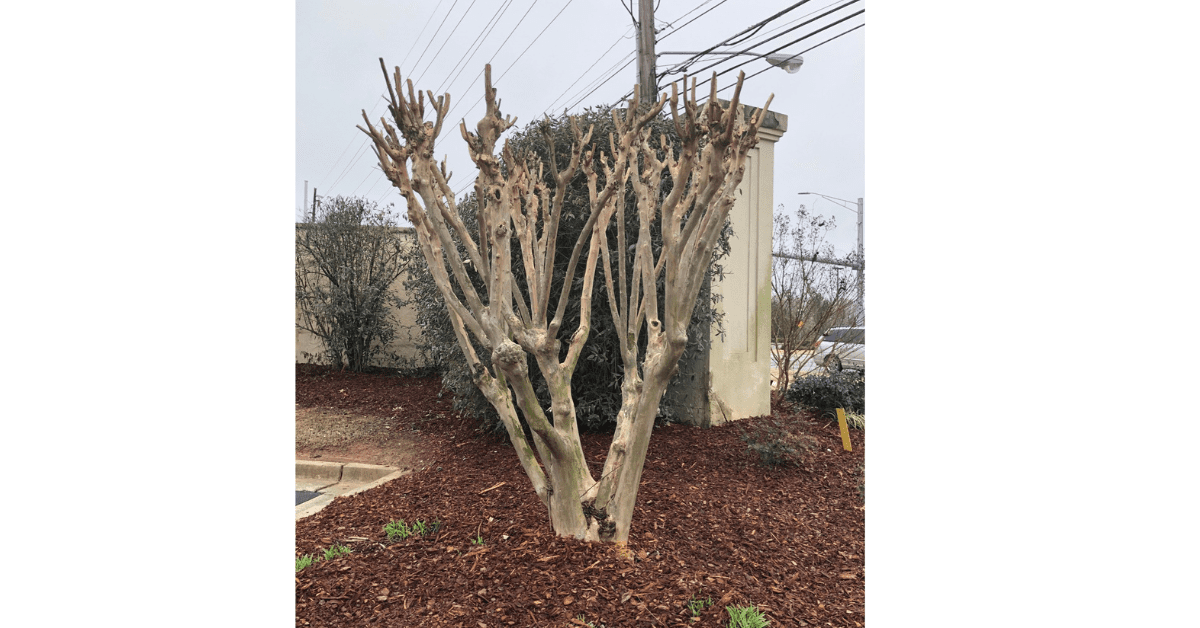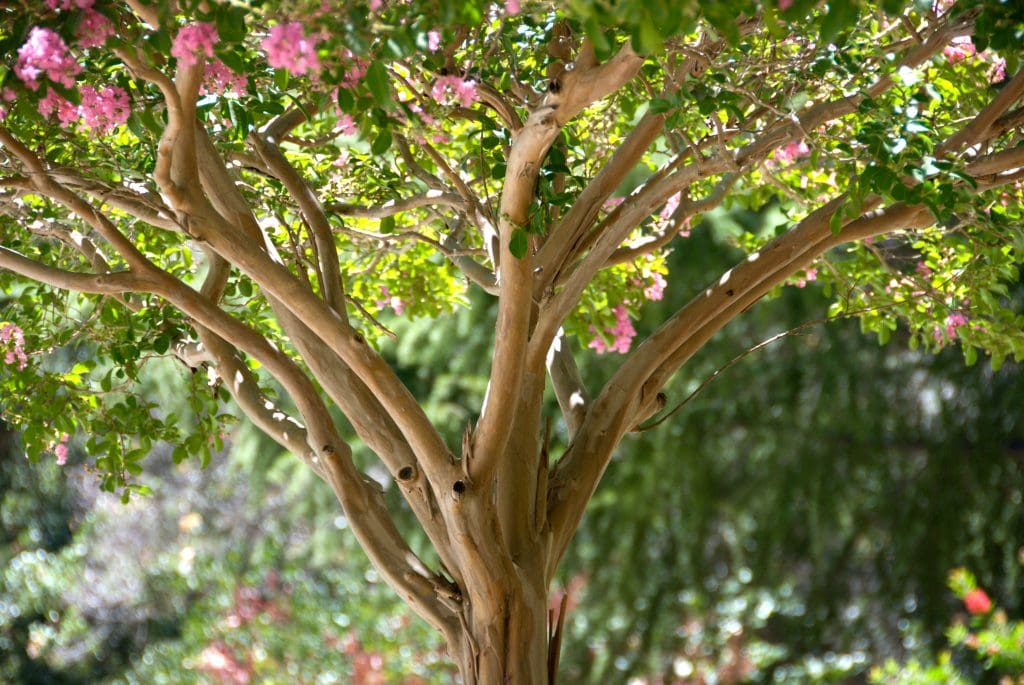
If you’re located in the South or have visited the region in late January or February, you’ve probably noticed a strange phenomenon where dormant crape myrtles are suddenly beheaded.
Often this well-intentioned but ill-informed practice stems from the belief it is necessary to encourage flowering in the plant. This is not the case.
It is also perpetuated by homeowners who believe that the practice must be correct because others are doing it. This course of thought is the same as thinking mulch volcanos are a good idea.
Some homeowners may think pruning their crape myrtles this way can’t be too bad as the plant doesn’t die, as the phrase ‘crape murder’ seems to imply. Perhaps a better term for it is crape mutilation as the trees won’t immediately die from this treatment, but they will be robbed of their natural, sculptural form.
Taking the time to talk the pruning shears out of your clients’ hands and demonstrating proper pruning techniques on your customers’ properties can slowly help turn the tide on the proliferation of this landscaping faux pas.
Educate Clients
It can be tempting to give in to a client’s request with the mindset of ‘the customer is always right,’ but as the landscape professional, it is your job to educate them that topping trees is never a good idea.
Getting to the root of their motive behind requesting this service will allow you to make the proper recommendation. If a client is requesting this because the crape myrtle is too close to the house or some other structure, the proper solution is removing the plant entirely and either selecting a smaller variety or relocating it to a space that can accommodate it. Numerous cultivars are available, ranging from dwarf varieties to those that can reach 20 feet tall.
If a client wants you to top their crape myrtle simply because everyone else does it, explain why you don’t participate in this practice. While it does result in larger blooms, the flowers grow on thinner, weaker branches. The new growth can become too thick for air movement and light to reach the inner branches.
Topped crape myrtles are more susceptible to diseases, insects and can have a shortened lifespan. Not to mention, crape murdered trees have unsightly knobs where they have been trimmed repeatedly that won’t be hidden until new growth appears.
Proper Pruning
If you’ve managed to convince a client they don’t need to butcher their crape myrtle or hire a landscaper willing to do so for them, don’t stop there.

While crape myrtles don’t need extreme pruning in the form of topping, they do benefit from proper pruning. This includes removing suckers at the base of the plant, crossed branches, and dead or damaged branches and twigs.
As the trunks mature, remove lower lateral branches to one-third or halfway up the height of the plant. Thin out the branches to allow light into the canopy. If your client wants to take this task on themselves, make sure they understand they should be trying to see through the crape myrtle, not over it.
Pruning should occur during the dormant season, later winter or early spring, as crape myrtles flower on new growth.
Restoring Murdered Crape Myrtles
Not all hope is lost if a customer has already topped their crape myrtle or is looking to change their ways.
The first option is to choose the strongest two or three sprouts from each stub and remove all of the other sprouts. The remaining sprouts will be stronger and the tree canopy will have better airflow. If you follow this procedure for a couple of seasons, the tree will improve in health and appearance.
The more drastic option is cutting the tree back to one or two inches of the ground while it’s dormant. After two to three weeks of growth, select three to five of the most vigorous shoots and remove the others. The crape myrtle will have returned to its natural form within three to five years without the witch’s broom.

